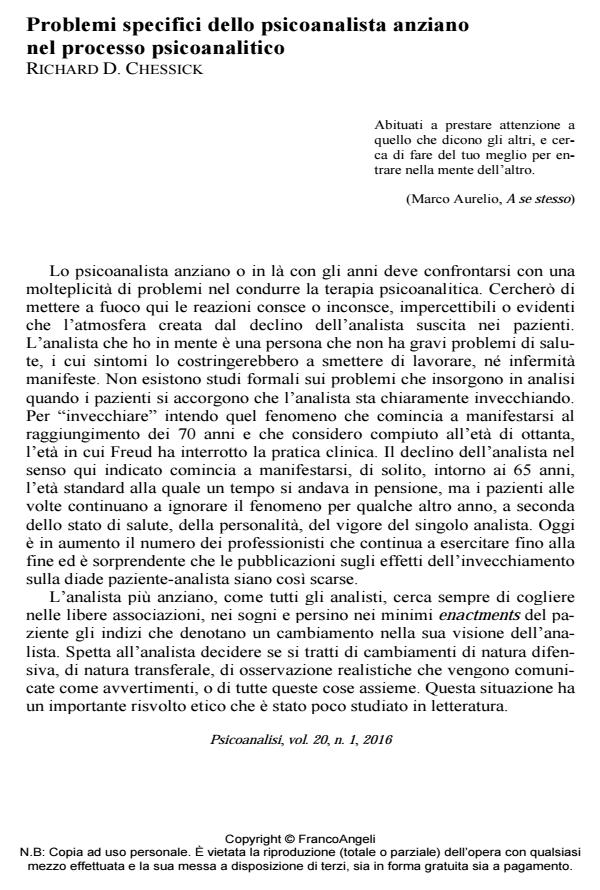Problemi specifici dello psicoanalista anziano nel processo psicoanalitico
Journal title PSICOANALISI
Author/s Richard D. Chessick
Publishing Year 2016 Issue 2016/1
Language Italian Pages 27 P. 31-57 File size 234 KB
DOI 10.3280/PSI2016-001004
DOI is like a bar code for intellectual property: to have more infomation
click here
Below, you can see the article first page
If you want to buy this article in PDF format, you can do it, following the instructions to buy download credits

FrancoAngeli is member of Publishers International Linking Association, Inc (PILA), a not-for-profit association which run the CrossRef service enabling links to and from online scholarly content.
The psychoanalytic process takes on a special ambience when the analyst is clearly elderly. The effects of this ambience on the aging analyst’s patients are discussed, and the sparse literature on the subject is reviewed. Clinical vignettes illustrate a number of these effects on the analytic process. Dealing with these special problems requires not only the analyst’s awareness of their existence but a continual monitoring of the transference-countertransference in order to avoid a silent collusion of patient and analyst to pretend these problems do not exist. The dangerous consequences of being unaware of the situation, for both patient and analyst, are discussed. If the influence of the patient’s perception of the analyst’s aging is ignored, it may lead to destruction of the treatment either through massive acting out or by a hopeless stalemate with or without the development of an endless psychoanalysis. Key words: senior psychoanalyst, senility, enactment, acting-out
Keywords: Senior psychoanalyst, senility, enactment, acting-out
Richard D. Chessick, Problemi specifici dello psicoanalista anziano nel processo psicoanalitico in "PSICOANALISI" 1/2016, pp 31-57, DOI: 10.3280/PSI2016-001004